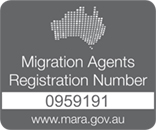If you are coming to Australia to work, either for a short or long period, you will need an appropriate visa. While other visas may allow you to work, if the main purpose of your stay is employment, you are required to satisfy specific requirements in regard to your qualification and work experience and often also in regard to your English language skills. Check the visa subclasses to see which one is the most appropriate, be it a temporary 400, 408, 482, 476 or 494 a permanent 186 and 191 visa.
TEMPORARY ACTIVITY VISA 408
This visa allows several activities: work in specific sectors, youth and cultural exchange programs, religious work, research activity, sports and entertainment activities, domestic work for executives, and superyacht crew entry. A particular stream, recently introduced due to the Covid-19 pandemic, allows to work up to 12 months if the applicant is employed in the sectors of agriculture, food processing, hospitality, tourism, health, disability and aged care, and child care.
SKILLED RECOGNISED GRADUATE 476
This is a visa for recent Engineering graduates from some recognised Universities from either a Washington Accord member or recognised institutions from Argentina, Brazil, Chile, Finland, Germany, Hungary, India, Iran, China, Philippines, Poland, Slovakia, Sweden, Tanzania. Applicants must be under 31 years old and must have graduated in the two years prior to applying with a qualification at a Bachelor level or higher. A certain level of English is required, except for applicants with some Anglo-Saxon passports.
TEMPORARY WORK SHORT STAY SPECIALIST SUBCLASS 400
This visa is granted to applicants who: – Are going to do highly specialised work for a short period or are going to participate to an activity or work in Australia’s interests. The visa is usually granted for three months, but in exceptional circumstances it may be granted for a period up to six months. Family members can be included but they cannot work.
TEMPORARY SKILL SHORTAGE (TSS) VISA 482
What’s a Temporary Skill Shortage visa?
With a TSS visa you can work in Australia up to two or four years, depending on your occupation. You can bring your family with you (they can work and study) and you can travel in and out of the States and Territories of Australia at any time. You are required to have a sponsor, that’s to say an employer that will offer you a job. The employer must also satisfy some requirements and must meet sponsorship obligations which are in place to ensure that overseas skilled workers are protected from exploitation, and that the visa programs are being used to meet genuine skills shortages, and not to undercut local labour wages and conditions.
This Temporary Skill Shortage visa process has three stages, these steps must be done in specific times and with specific forms and documents:
- Sponsorship application
The Australian employer must apply to become an approved Sponsor; the business must be legally registered and lawfully operating. - Nomination application
The approved business sponsor is required to lodge an application for a position that needs to be filled. The occupation must be on either the Short-Term Skilled Occupation List (STSOL) or the Medium Long-Term Strategic Skilled List (MLTSSL), the position must be genuine and paid according to the national market rate with a minimum threshold that is set every year by the Australian Government. - Visa application
The prospective visa applicant must lodge an application for a subclass TSS visa. The occupation must match the position proposed and the applicant must show to have the skills to perform the duties and licensing or professional registration, if applicable. For example, you may need an electrical licence with the New South Wales Fair Trading Department or any other Australian State, depending on where you are working. Applicants from some countries working in some occupations will require a skill assessment. The applicant must also sit an English test (some exceptions apply) and be free from medical conditions and criminal convictions.
We can help you to arrange a skill assessment or any licensing required for your visa.
EMPLOYER NOMINATION SCHEME (ENS) VISA SUBCLASS 186
What is a 186 Visa?
This is a work visa that grants permanent residence to you and your family members. It is the ideal visa if you would like to live and work in Sydney, Melbourne, Brisbane or some other cities. You are required to have a sponsor, that’s to say an employer that will offer you a job. The sponsor must also satisfy some requirements.
This visa process has two stages, these steps have to be done in specific times and with specific forms and documents:
- Nomination application
The business must be legally registered and lawfully and actively operating and must satisfy the training requirement. The approved business sponsor is required to lodge an application for a position that needs to be filled. The occupation must be on the Medium Long Term Strategic Skilled List (MLTSSL) list, the position must be genuine and paid according to the national market rate, given there are specific indications in order to estimate the correct salary. - Visa application
The prospective visa applicant must lodge an application for a subclass 186 visa. The occupation must match the position proposed and the applicant must show to have the skills to perform the duties. A professional registration or licensing may be required, for example if you are a nurse, you will have to register with the Australian Health Practitioner Regulation Agency (AHPRA). The applicant must also sit an English test and be under 45 years old (few exceptions apply). You must also be free from medical conditions and criminal convictions.
We can help you to arrange a skill assessment or any licensing required for your visa.
SKILLED EMPLOYER SPONSORED REGIONAL (PROVISIONAL) VISA SUBCLASS 494
What is a 494 Visa?It is a five-year Australian temporary visa for you and your family members, if you are sponsored by an approved employer, who is located in a regional area. The condition on this subclass visa is that, once you obtain it, you must work for the sponsor for at least three years in order to apply for your permanent residence later with a visa 191. Regional areas exclude Sydney, Melbourne and Brisbane.This Subclass visa process has three stages, these steps must be done in specific times and with specific forms and documents:
Regional applicationDepending on the location, the appropriate regional migration authority must assess the employment proposal and approve it.
Nomination applicationThe Australian business must be legally registered and lawfully and actively operating and the sponsor is required to lodge an application for a position that needs to be filled. The occupation must be on the appropriate immigration list for this regional visa 494, the position must be genuine and paid according to the national market rate.
Visa applicationThe prospective visa applicant must lodge an application for a subclass 494 visa. The occupation must match the position proposed and the applicant must show to have the skills to perform the duties. The applicant must also sit an approved English test. There is a skill assessment required (few exceptions apply) and, depending on your occupation, a licensing or professional registration procedure may be also required. You must also be free from medical conditions and criminal convictions.We can help you to arrange a skill assessment or any licensing required for your visa.
PERMANENT RESIDENCE (SKILLED REGIONAL) VISA SUBCLASS 191
This visa will be active from November 2022. It is an Australian permanent residence visa that can be requested after having held a 494 visa and lived and worked for a sponsoring employer in a regional area for at least three years.
LABOUR AGREEMENT AND DESIGNATED AREA MIGRATION AGREEMENT (DAMA)
What is a Labour Agreement?
This type of Agreement sets out the terms and conditions by which the approved sponsor (employer) may recruit, employ or engage the services of overseas workers who are intended to be employed as holders of Temporary Skill Shortage (TSS) 482 visas in its business (up to four years). The Labour Agreement usually lasts for up to 5 years and may also include permanent residence with an Employer Nomination Scheme visa 186, if this has been agreed by the Government, after three years of work with the same sponsor.
The Labour Agreement is normally used when some positions do not fit in the standard visa pathways already available. There are company specific agreements, that’s to say the agreement is negotiated with a single business, and there are industry specific agreements or State and regional agreements (Designated Area Migration Agreement), where requirements have been decided already by the Government and usually cannot be changed.
What is a Designated Area Migration Agreement (DAMA)?
Some Australian States, Territories or regions have signed an agreement with the Australian Federal Government that allows employers of these areas to sponsor skilled and semi-skilled foreign workers for jobs that they are unable to fill with local supply. The agreement is a Labour Agreement and is called DAMA. These DAMAs operate through an initial temporary visa process with a Temporary Skill Shortage 482 visa and in some cases after three years of work with the same sponsor, with a permanent process with an Employer Nomination Scheme 186 visa transition stream. Every DAMA has different requirements and eligible occupations.
Currently there are agreements with Northern Territory (Northern Territory Designated Area Migration Agreement), South Australia (Adelaide Technology and Innovation Advancement Agreement and South Australian Regional Workforce Agreement), Western Australia (Goldfields Designated Area Migration Agreement), New South Wales (Orana Designated Area Migration Agreement), Victoria (Great South Coast Designated Area Migration Agreement), Queensland (Far North Queensland Designated Area Migration Agreement). Other DAMAs are in the process to be approved by the Government.
Frequently Asked Questions
If I had consultation already and I know I have the requirements for an employer sponsored visa and I find an available sponsor, should the sponsor proceed with a consultation as well?
We do advise to do so. To be approved by the Department of Immigration, the sponsor must meet specific requirements too, so a consultation will be necessary. Payment can be made by the sponsor or by the applicant depending on their own agreement, however by law the sponsor should pay if the visa is a TSS 482. It is your choice if you prefer to make a joint consultation during the same appointment.
In case of sponsored visa applications, who is responsible for the payment?
For TSS 482 visas, the sponsor must pay the Government nomination, the Skilling Australians Fund (SAF) and sponsorship fees, as well as the agent’s fees for those stages or other recruitment fees; while the applicant may pay for the visa application, both Government and agent’s fees. In case of an Employer Nomination 186 and Skilled Employer Sponsored Regional (provisional) 494 visas, the sponsor is obliged to pay for the SAF only. For all other visas, the payment will be decided in accordance with the two parties.
Can the agent speak on behalf of the applicant and convince the sponsor to apply for the sponsorship or raise the salary?
No. The agent is not responsible for the relationship between sponsor and applicant and he cannot interfere with the negotiations, except for clarifying legal requirements so that the application is successful. The final decisions on salary and conditions of the contract are left to the two parties. If the agreements are not in accordance with the law, the agent will suggest possible changes. If, at the end of the negotiations, the chance of failure is high, the agent may decide not to continue with the application.
 migrate to Australia, migrate to New Zealand, migrate to Canada
migrate to Australia, migrate to New Zealand, migrate to Canada


